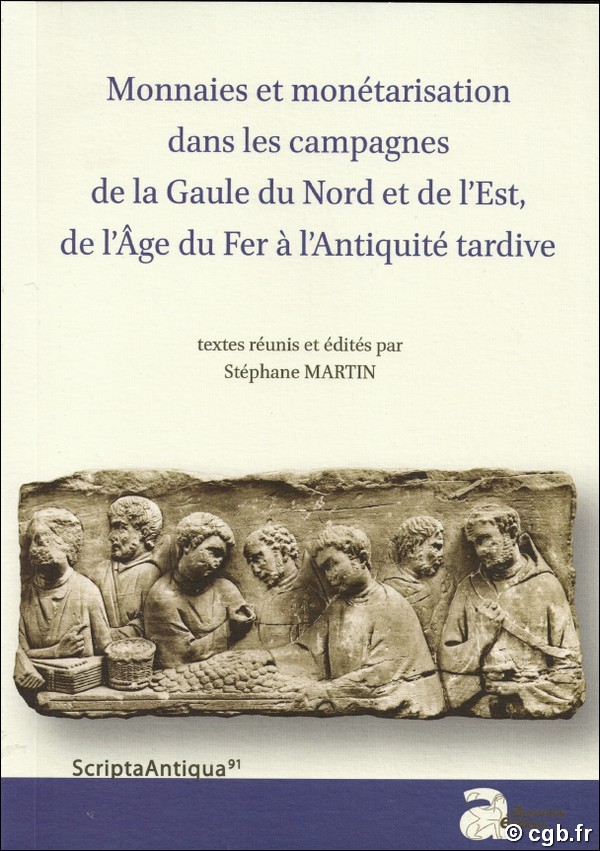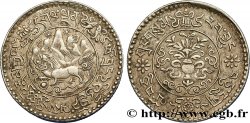lm337 - Monnaies et monétarisation dans les campagnes de la Gaule du Nord et de l’Est, de l’âge du Fer à l’Antiquité tardive MARTIN Stéphane (Dir.)
无库存.
所有在网站上销售的产品 (2025)
价格 : 25.00 €
所有在网站上销售的产品 (2025)
价格 : 25.00 €
作者 MARTIN Stéphane (Dir.)
出版者 Ausonius Éditions
语言 Français / Anglais
描述细节 Bordeaux 2016, broché, 200 pages
重量 600 g.
评论
In discussions about the ancient economy, it is still customary to oppose city-dwellers, markets and the monetary economy on the one hand, to autarchic peasants practising barter and using money only on rare occasions on the other hand. However, in the last decades, this view has been increasingly challenged by new archaeological research. Building on recent and sometimes unpublished data, this book seeks to shed new light on coin circulation and money use in the countryside in Northern Gaul.
A series of case studies addresses the topic in various regions from France, Switzerland, Belgium, as well as Luxembourg, Germany and the Netherlands. Furthermore, the problem is tackled in the “longue durée”, from the 2nd c. BC to the 5th c. AD, in order to understand fully the effects, first of the Roman conquest on Iron Age Gaul, second of the transition from the Principate to Late Antiquity.
Papers are in French and English.
In discussions about the ancient economy, it is still customary to oppose city-dwellers, markets and the monetary economy on the one hand, to autarchic peasants practicing barter and using money only on rare occasions on the other hand. However, in the last decades, this view has been increasingly challenged by new archaeological research. Building on recent and sometimes unpublished data, this book seeks to shed new light on coin circulation and money use in the countryside in Northern Gaul. A series of case studies addresses the topic in various regions from France, Switzerland, Belgium, as well as Luxembourg, Germany and the Netherlands. Furthermore, the problem is tackled in the “longue duration”, from the 2nd c. BC to the 5th c. AD, in order to fully understand the effects, first of the Roman conquest on Iron Age Gaul, second of the transition from the Principate to Late Antiquity. Papers are in French and English
A series of case studies addresses the topic in various regions from France, Switzerland, Belgium, as well as Luxembourg, Germany and the Netherlands. Furthermore, the problem is tackled in the “longue durée”, from the 2nd c. BC to the 5th c. AD, in order to understand fully the effects, first of the Roman conquest on Iron Age Gaul, second of the transition from the Principate to Late Antiquity.
Papers are in French and English.
In discussions about the ancient economy, it is still customary to oppose city-dwellers, markets and the monetary economy on the one hand, to autarchic peasants practicing barter and using money only on rare occasions on the other hand. However, in the last decades, this view has been increasingly challenged by new archaeological research. Building on recent and sometimes unpublished data, this book seeks to shed new light on coin circulation and money use in the countryside in Northern Gaul. A series of case studies addresses the topic in various regions from France, Switzerland, Belgium, as well as Luxembourg, Germany and the Netherlands. Furthermore, the problem is tackled in the “longue duration”, from the 2nd c. BC to the 5th c. AD, in order to fully understand the effects, first of the Roman conquest on Iron Age Gaul, second of the transition from the Principate to Late Antiquity. Papers are in French and English








 对产品描述纠错
对产品描述纠错 打印
打印 分享我的选择
分享我的选择 提问
提问










